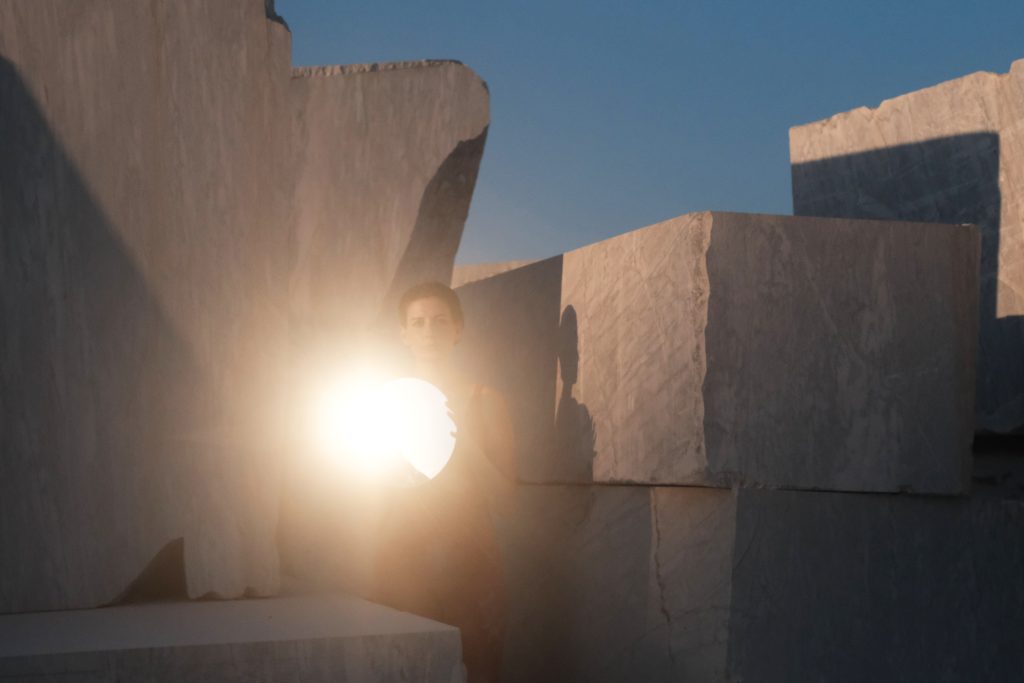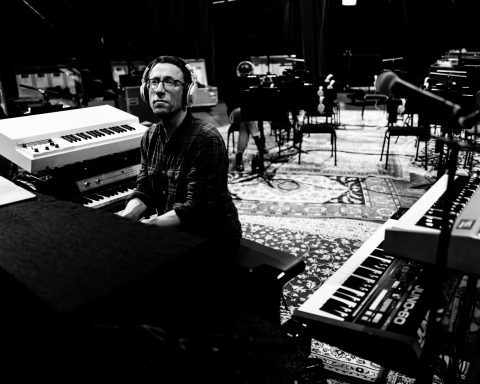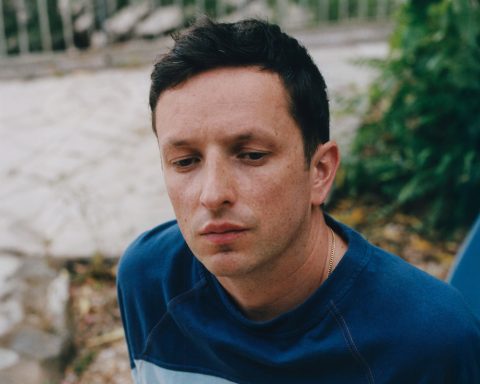If the earth produced music, what would it sound like? Maya Shenfeld traveled to an active quarry in Portugal and took field recordings in record heat to find out. That pilgrimage symbolizes a career spent plumbing the depths of interdisciplinary arts, including music, film, and theater. On Under the Sun, the Jerusalem-born, Berlin-based composer uses everything from a youth choir to the Roland MC-202 to create audio alchemy, bridging the gap between electronic and organic, ancient and futuristic.
Two Homes
Born to a Brazilian Polish father and a Moroccan mother, Shenfeld grew up in a household that vibrated to multifarious sounds. “We’d listen to mix tapes with Omer Faruk, a Turkish flute player, and then Brazilian and classical music.” The cultural fusion was potent soil for the emerging musician whose talents soon earned her prestigious awards and scholarships.
Shenfeld’s path eventually brought her to Berlin, where she has lived for over thirteen years. The city, while creatively stimulating, required some initial adjustment. “I have a hard time with the weather and long winters, having grown up in the Middle East,” she admits. “But I love it and am grateful for what the city has given me. It is a hub of music and musicians, with so much discourse and lovely people.”
Experiments with Sound
Though Shenfeld’s music exists outside conventional genre definitions, the term experimental usually provides a simple shorthand for newcomers. “People may tie the term to avant-garde music experimentalism,” she declares. “But part of what I like about producing, composing, and playing in this way is finding the playfulness.”
With degrees from the Jerusalem Academy of Music and Dance and the University of the Arts (UdK) in Berlin, Shenfeld knows precisely which rules she chooses to break in her creations. “In more academic, experimental circles, they tend to ignore advances in production in electronica and popular music, which I’m very passionate about,” Shenfeld explains. “In that sense, it’s all a big experiment.”
"In more academic, experimental circles, they tend to ignore advances in production in electronica and popular music, which I'm very passionate about."
Interstellar Form
Shenfeld’s unconventional sound collages can take many shapes. For example, “Interstellar,” with its shifting arpeggiated moments, is comparatively more chordal and ordered than other pieces from Under the Sun. The track’s structure owes much to Shenfeld’s rigorous schooling.
“It’s composed in the form of a classical Romantic sonata,” she reveals. “It has an A and B introduction with contrasting characters. I like the idea of counterpoint and classical composition meeting production and synthesizers.”
The Collective Self
From her work with filmmaker Pedro Maia to ongoing collaboration with the Ritter Youthchoir conducted by Ann Kristin Mayr, Shenfeld has several artistic partnerships. She has a theory about the different ways she creates.
“There are two parallel strands of thinking, and one is collaborative,” she explains. “Like mixed media or working with dancers, theater people, and film people.” The flip side of the equation emerges from solitude. “The other strand is self-exploration, being isolated in the studio and seeing what comes up.”
"I have a soundscape in my mind, like orchestrating the color palette I'm going to use for a painting."
Going After the Quarry
Honing her explorations into fully formed musical pieces takes time. Shenfeld compares the process to creating visual art. “I have a soundscape in my mind, like orchestrating the color palette I’m going to use for a painting,” she says. “This time, I knew I wanted to work with analog synths and woodwinds.”
In addition to those pre-considered sonic hues, Under the Sun features field recordings with a spontaneous bent. “Pedro and I took this trip to a marble quarry in Alentejo, Portugal, to capture visuals for performance,” the artist recounts. “We had a very open-minded approach about the sound and what it could turn into.”
Capturing the volatile environment on the hottest day of the year was no simple task. “The quarries are active, so it’s not a peaceful place where you can clap, sing, and record flutes down in the pit,” Shenfeld explains. Yet the caustic energy worked in their favor. “It’s drilling and massive machine sounds—monstrous, very industrial. Those are the sounds I ended up with.”

Droning On
While the earthen tones Shenfled emerged with are unorthodox, they fall into the tradition known as drone music. Continuous, minimal tones existed in many ancient cultures and are now a core part of ambient and electronic genres.
To Shenfeld, drones convey the temporal experience without words. “Music can be a medium that brings you closer to engaging with the world or escaping from the world,” she posits. “With drones, it is very much about slowing down my experience of time.”
"In 2024, there is overstimulation, many things to worry about, and a lot of noise. Drones can be a nice antidote to all of that.”
The soothing nature of primordial sounds feels especially essential to her right now. “In 2024, there is overstimulation, many things to worry about, and a lot of noise. Drones can be a nice antidote to all of that.”
Additionally, she is aware of the correlation between her music’s environmental aspects and the tenuous state of our planet. “Under the Sun is more of a meditation in response to questions about existing on this planet at this time.”

MC-202: Love at First Sound
While creating art with such an ambitious scope, it’s no surprise Shenfeld’s workflow incorporates many tools—from massive outdoor spaces to a micro monophonic analog synthesizer. “I have to thank Caterina Barbieri for introducing me to the wonderful world of the MC-202,” she says. While working together during a residency program, the Italian composer brought the vintage synth into the studio. It was an instant connection.
“I immediately fell in love with that sound, and finding one took me a while. They’re quite rare,” Shenfeld recalls of the diminutive instrument. “The MC-202 is just heartbreaking. It’s amazing. It sounds good no matter what you do.”
"I want people to have their own experience with it. Whatever happens, I'm open to it."
Songs of Experience
Even the album title bears existential weight. Surprisingly, it refers not to Portugal’s scorching temperatures but to the age-old phrase, “There’s nothing new under the sun,” from the Book of Ecclesiastes in the Old Testament. “I came across a modern critical reading, and it struck me,” she says of the maxim. “This book has some really interesting stoic approaches to life.”
Shenfeld’s work draws on both the personal and the universal and demands as much as it gives. Does she have an ideal effect she hopes to impart to the listener? “I trust people,” the artist says. “I want people to have their own experience with it. Whatever happens, I’m open to it. It’s there to be experienced.”







